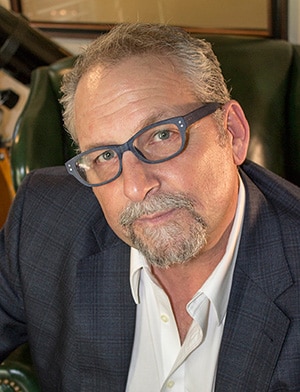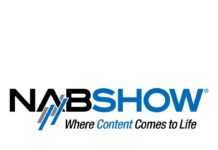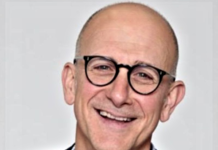
(By Paul Weyland) For as long as I can remember, radio has had to make do with 6-8 percent of total advertising revenues. Television, on the other hand, has historically taken more than 20 percent.
Sure, television can be perceived as more glamorous, offering sight, sound, and motion. But regarding audience, both mediums reach about 90 percent of consumers. So why the disparity in revenue share? Could it be that early on, the radio-industry leaders looked at newspaper rates and then priced their stations lower to be competitive? And then television came along and, because it was newer and edgier, priced its rates much higher? Maybe. Are advertising agencies harder on radio stations than they are on TV?
Possibly, perhaps probably. But I think there’s more to it than that.
Back in the olden days, our radio stations had a horrible sales manager. I mean, he was just plain inept. The one thing he was really good at was accidentally mixing up metaphors. He said things like, “We’ll burn that bridge when we get to it.” Or, “Live and let learn.” He couldn’t help it, he did it all the time, and he was always good for a laugh. My favorite was when he announced to us in a meeting, “Folks, we’re fighting tooth and nail over bones!”
Hahahahaha! What? What he meant to say was that, in his opinion, we were wasting too much time fighting each other over little bitty accounts, both inside the building and outside. I never forgot that. And he was right. We were. We wasted time as reps fighting with each other over accounts in-house.
But not only did we fight internally, we also fought externally — against the other radio stations. In fact, we priced ourselves to beat them and get their share of the radio buy. Not the whole client budget, mind you, just the radio share. Most of the time we had our eye only on the radio share, oblivious to the wider budget outside our own apportionment. We were playing small ball. Sure, the agencies had a hand in it, but while they were beating us up as an industry, there is no question that we were busy beating each other up, and, as a result, market costs per point fell apart. Meanwhile, around the block, the television stations, even after beating themselves up as well, still wound up with the lion’s share of the client’s total budget.
So you’d think that with the demise of print advertising and the Yellow Pages going down like the Titanic, we in radio might have picked up a little in the share area? No, still 7 percent or so. Who’s to blame now? Why, the Internet, of course. It’s all their fault, isn’t it?
No, I don’t think so. Not entirely.
I watch, and I listen. I just got off the phone with a medium-market radio salesperson who told me he had recently “discovered” me, and, because of what I taught him, he’s changing his ways. I asked him what he meant by that, and he said that since he started with some of the things I’ve written and said and began trying some of the techniques I recommend, his life has gotten easier. Essentially, what has changed for him is that he’s doing a better job qualifying leads. He’s weeding out the little guys (squirrels) and moving onto bigger game. Good.
The other thing he told me is that he’s now asking for more budget. He takes what he used to ask for a month, and now he asks for that much a week. And he’s getting it! How? He’s now presenting better ideas than anybody else is pitching — regardless of media. And he does the ROI math for the clients, showing them with facts that doing business with him is not gambling, but more of a good, calculated risk.
Most reasonable local direct decision-makers are willing to listen to new ideas, especially if those ideas sound like they will make their cash registers ring. And once they see, in language they understand, that their investment in radio is a good, calculated risk, they will loosen the purse strings and invest more money in that idea. Ideas, as well as a clearer understanding of risk, are the key, regardless of the medium.
I remember a local station manager telling me about his epiphany regarding what media clients will buy. He said he changed his format, and advertised the format change with the local billboard company. His billboard rep called him one day and bragged to him that she had just signed a bigger client than he had. The station manager asked if that client might be the new dentist in town. (He’d seen several billboards advertising that dentist.) She said that yes, indeed, that was her new client.
The station manager realized that the dentist probably wasn’t a billboard lover, but the billboard rep had convinced that dentist beyond a shadow of a doubt that her plan for his success was better than the dentist’s, and so he bought the billboard campaign. “Had I approached that client and done the same thing, he probably would have bought radio instead,” the local station manager said.
If we in radio (or any other medium, for that matter) really want to expand our share of revenue, we’ve got to work for it. That’s all there is to it. Regardless of how well the stock market might be doing, and regardless of lower unemployment figures, most of us know that times are harder for local direct businesses right now. They need our best and brightest to help them create campaigns that will put money in their pockets without having to sacrifice their gross margins of profit. Are we capable, as an industry, of doing that? I say we are.
For us to pull ahead, we’ve got to focus more on new ideas for clients, not cheap packages. We also need to prospect new categories of business, outside of the boxed-up old categories we’ve over-prospected for so long. And we need to arm our sellers with the critical information they need to calculate ROI for direct clients so we can convince them to double, triple, or even quadruple what they “think they should” be spending on our stations.
We have to do these things. It’s critical and you know it. Ignore it at your peril. Because the alternative is to continue fighting tooth and nail over bones.
Paul Weyland helps broadcast companies sell more long-term local direct business. Visit him online at www.paulweyland.com






Best commentary I’ve seen all month.
Thank you, Mark.
Thank you, Dick. I appreciate your comment.
Great reading. I have worked for some of same idiots. I do a lot of spec and creative ideas. It actually works